|
|
|
Sort Order |
|
|
|
Items / Page
|
|
|
|
|
|
|
| Srl | Item |
| 1 |
ID:
144713
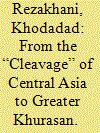

|
|
|
|
|
| Summary/Abstract |
The history of Central Asia is normally considered peripheral to those of the civilizations that surrounded it—Marshal Hodgson termed it a civilizational “cleavage.” However, in the early Islamic period this region, particularly its southern and western parts, emerges as the dominant entity of Greater Khurasan to play a central role in the affairs of the Islamic Caliphate. This paper considers the history of the region, dubbed East Iran, before this rise to importance and proposes a different historiographical approach focusing on the developments in East Iran during the period of late antiquity and in interaction with the Sasanian Empire. It is proposed that the Greater Khurasan emerged as the result of the merging of the socio-cultural worlds of East Iran and that of the Sasanian Empire.
|
|
|
|
|
|
|
|
|
|
|
|
|
|
|
|
| 2 |
ID:
144712
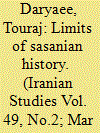

|
|
|
|
|
| Summary/Abstract |
This essay discusses the position of Sasanian Studies from its inception in the late nineteenth century, to its reinvigoration at the beginning of the twenty-first century. The work also discusses the development of the field of Sasanian history and civilization vis-à-vis the three fields of Iranian, Islamic and Late Antique Studies. It is posited that Sasanians have benefited from cross-disciplinary and new historical frameworks that go beyond the traditional field of Iranian Studies, which was never as interested in the history of the period.
|
|
|
|
|
|
|
|
|
|
|
|
|
|
|
|
| 3 |
ID:
144711
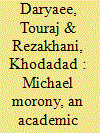

|
|
|
| 4 |
ID:
144717
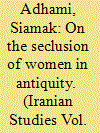

|
|
|
|
|
| Summary/Abstract |
Summary: The study of the feminine in ancient Iran is an area which deserves much greater attention than it has thus far received. By utilizing a number of primary sources, textual and otherwise, a few observations are offered here which concern the rites of women through the centuries. These evolving rites, which are described by the doctors of the then-dominant religion of Zarathustra, deal with the preservation of purity through seclusion of women in a world which is under constant attack from the demonic, polluting forces. Throughout the essay, the different means of fighting this battle are explored and suggestions for further research in the field are made.
|
|
|
|
|
|
|
|
|
|
|
|
|
|
|
|
| 5 |
ID:
144715


|
|
|
|
|
| Summary/Abstract |
The Armenian general Smbat Bagratuni's remarkable rise to military and political preeminence in the late sixth- and early seventh-century Sasanian Empire presents a fascinating historical question: how did a liminal figure, a Christian from a frontier region, become the “Joy of Ḵusrō” and “Warrior of the Lords” of king Ḵusrō II Aparvēz (590–628 CE)? This essay argues that Bagratuni's accomplishments were rooted in Sasanian patterns of political decentralization, provincial regionalism and strategic politics. The Sasanians were ethnically Persian, but Parthian and Armenian aristocrats from the periphery of the empire played a central role in upholding the regime. Granting titles, wealth and personal support, the king sought to turn aristocratic families against each other to enhance royal authority. Simultaneously, regional aristocrats like Smbat Bagratuni used royal patronage to advance their local interests, often at the expense of the royal center. The life of Smbat Bagratuni illustrates how complex negotiations of individual and collective identity shaped relations of “center” and “periphery” in Sasanian Iran.
|
|
|
|
|
|
|
|
|
|
|
|
|
|
|
|
| 6 |
ID:
144714
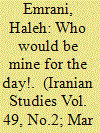

|
|
|
|
|
| Summary/Abstract |
Zoroastrians of Babylonia had long lived alongside an important Jewish community whose presence in the region can be traced back to the Achaemenid period (c. 550‒330 BCE). Such long coexistence should justify an interest in the examination of cultural sharing between these two religious groups of Ērānšahr; however, it is just recently that the question of the level of cultural contact between them has become a more important source of inquiry and research by scholars of Iranian history, religious studies and Late Antiquity. The exchanges between the Jews and Zoroastrians of the Sasanian period and their impact on the character of the Babylonian Talmud have been the subject of a number of recent studies, notably by Shaul Shaked, Yaakov Elman, Geoffrey Herman and Shai Segunda, among others. The aim of this article is to contribute to these efforts by exploring the roots of some distinctly Sasanian marriage customs that transcended religious lines and were shared by the rabbinic Jews and Zoroastrians of Ērānšahr.
|
|
|
|
|
|
|
|
|
|
|
|
|
|
|
|
| 7 |
ID:
144716
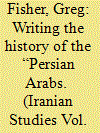

|
|
|
|
|
| Summary/Abstract |
Modern scholarship on Arabs in the pre-Islamic period has focused on Rome's Arab allies—the so-called “Jafnids” or “Ghassānids,” with much less attention paid to Persia's Arab allies, the so-called “Naṣrid” or “Lakhmid” dynasty of Arab leaders at al-Ḥīrah in Iraq. This article examines select pre-Islamic sources for the Persian Arabs, showing that even with the meager evidence available to us, and the lack of archaeological material, it is possible to draw a relatively complex portrait of the Persian Arabs. This article situates the Persian Arabs as important figures in some key themes and phenomena of late antiquity, such as the growth of Christian communities, the conflict between Rome and Persia, and the struggle for influence in the Arabian peninsula.
|
|
|
|
|
|
|
|
|
|
|
|
|
|
|
|
|
|
|
|
|